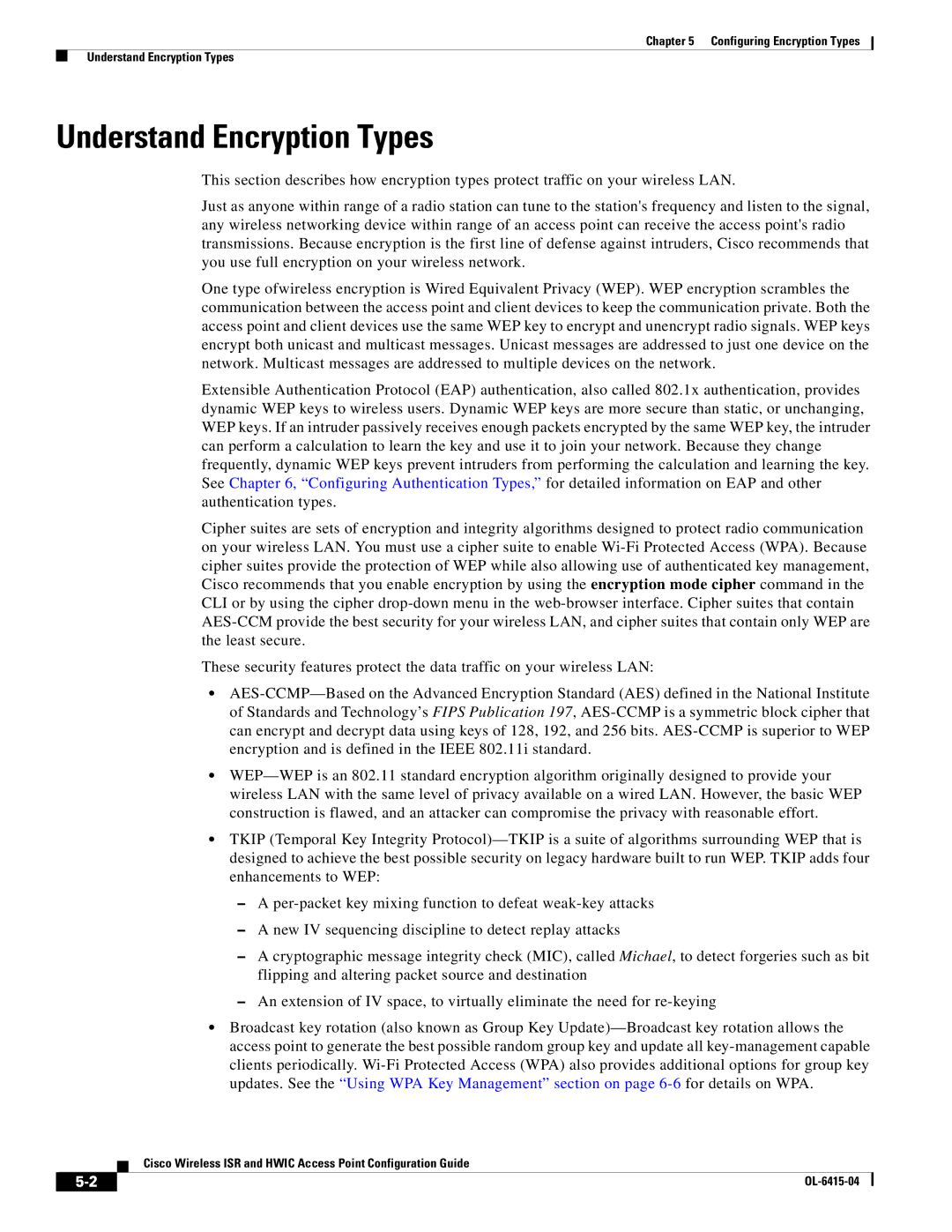
Chapter 5 Configuring Encryption Types
Understand Encryption Types
Understand Encryption Types
This section describes how encryption types protect traffic on your wireless LAN.
Just as anyone within range of a radio station can tune to the station's frequency and listen to the signal, any wireless networking device within range of an access point can receive the access point's radio transmissions. Because encryption is the first line of defense against intruders, Cisco recommends that you use full encryption on your wireless network.
One type ofwireless encryption is Wired Equivalent Privacy (WEP). WEP encryption scrambles the communication between the access point and client devices to keep the communication private. Both the access point and client devices use the same WEP key to encrypt and unencrypt radio signals. WEP keys encrypt both unicast and multicast messages. Unicast messages are addressed to just one device on the network. Multicast messages are addressed to multiple devices on the network.
Extensible Authentication Protocol (EAP) authentication, also called 802.1x authentication, provides dynamic WEP keys to wireless users. Dynamic WEP keys are more secure than static, or unchanging, WEP keys. If an intruder passively receives enough packets encrypted by the same WEP key, the intruder can perform a calculation to learn the key and use it to join your network. Because they change frequently, dynamic WEP keys prevent intruders from performing the calculation and learning the key. See Chapter 6, “Configuring Authentication Types,” for detailed information on EAP and other authentication types.
Cipher suites are sets of encryption and integrity algorithms designed to protect radio communication on your wireless LAN. You must use a cipher suite to enable
These security features protect the data traffic on your wireless LAN:
•
•
•TKIP (Temporal Key Integrity
–A
–A new IV sequencing discipline to detect replay attacks
–A cryptographic message integrity check (MIC), called Michael, to detect forgeries such as bit flipping and altering packet source and destination
–An extension of IV space, to virtually eliminate the need for
•Broadcast key rotation (also known as Group Key
Cisco Wireless ISR and HWIC Access Point Configuration Guide
|
| |
|
